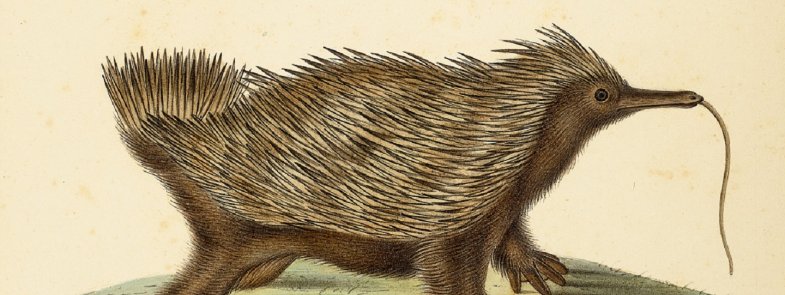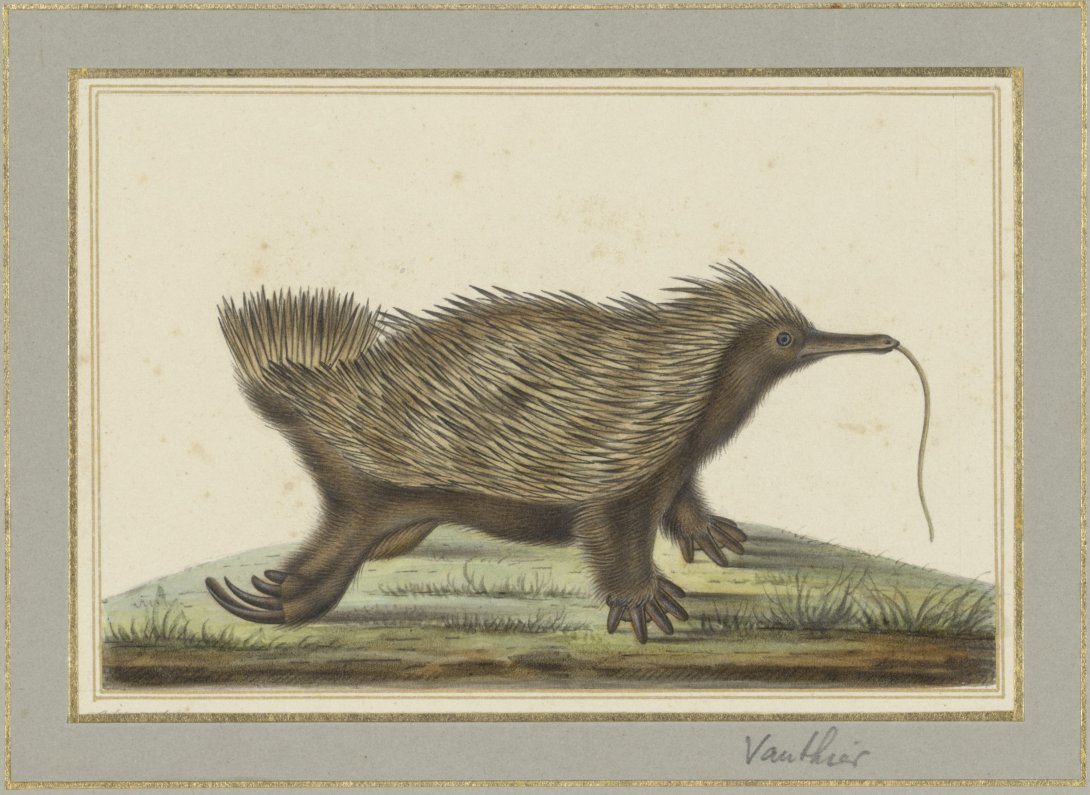
Many of us will be enjoying some time outdoors this summer and may be lucky enough to come across an echidna on our travels. We have recently added this 1827 watercolour of an echidna to the collection.
Explore the 1827 echidna watercolour in Trove
This watercolour is one of the earliest depictions of an echidna in our collection. It is an example of a natural history illustration created for scientific purposes.
During the 18th century, European countries raced to chart and document the islands of the Pacific region. Detailed illustrations of the flora and fauna were made to help scientists classify them. Popular illustrations were then chosen to be engraved and reproduced in publications. This illustration of an echidna exaggerates one of their most unique features, their backwards facing hind legs.

This particular watercolour from 1827 is by Antoine-Charles Vauthier. He was a French entomologist, botanist, author and natural history illustrator. Vauthier wrote several books that displayed his detailed illustrations of plants and wildlife. His publications include the Histoire Naturelle des Lepidopteres ou Papillons de France (1821-1824) and Dictionnaire classique d'histoire naturelle (1822).
Whether you head out to the bush, the ocean, or the backyard this summer, keep an eye out for our little not-so-furry native friends.